This article was medically reviewed by Troy A. Miles, MD and by wikiHow staff writer, Jessica Gibson. Dr. Miles is an Orthopedic Surgeon specializing in Adult Joint Reconstruction in California. He received his MD from the Albert Einstein College of Medicine in 2010, followed by a residency at the Oregon Health & Science University and fellowship at the University of California, Davis. He is a Diplomat of the American Board of Orthopaedic Surgery and is a member of the American Association of Hip and Knee Surgeons, American Orthopaedic Association, American Association of Orthopaedic Surgery, and the North Pacific Orthopaedic Society.
This article has been viewed 31,799 times.
You've probably seen someone with fingers that are double jointed. Although hammer toes appear like double jointed digits, a hammer toe is an involuntary bending of one of the small toes. They usually start slowly, but get progressively worse. If hammer toes aren't treated, you may need surgery. If you've recognized a hammer toe early, you probably still have flexibility, but your joints will become more rigid and inflexible over time. This is why it's important to reduce your risk for hammer toes and get early treatment.
Steps
Reducing Your Risk for Hammer Toe
-
1Wear shoes with plenty of room. Choose shoes that have a wide toe box and low heels. Pick shoes that fit the shape of your foot. Try to have 1/2 inch of space between the end of your toe and the shoe when you're standing. The ball of your foot should feel comfortable in the shoe. You should also buy shoes at the end of the day so that your shoes offer enough room for any swelling that happens by the end of the day. [1]
- If you do occasionally wear high heels, get the shoes professionally fitted so you have the best fit possible and avoid wearing heels over 2 inches high.
-
2Use arch supports. See a podiatrist (a doctor who specializes in feet) to get a prescription for orthotic supports. These orthotic supports are basically shoe inserts that are specifically designed for your feet. They prevent hammer toes or slow the progression of the condition.
- You should also use silicone or moleskin padding on any sore or tender toes when you are wearing shoes. These can reduce friction and prevent irritation.
Advertisement -
3Scrub corns or calluses with pumice. If you have corns or calluses, painful areas of hardened tissue, use a pumice stone.[2] Soften the corn or callus in warm water. Take the pumice stone and rub over the hardened tissue to wear it down. Apply a moisturizer to the corn or callus to keep it soft.[3]
- Avoid rubbing the corn or callus with the pumice stone to the point where you draw blood or go below the level of the skin.
-
4Practice foot stretches. Strengthen the muscles of your feet to prevent developing a hammer toe. Do exercises that stretch, bend and splay the toes all together. You should also move each toe individually and massage them as you stretch. Practice curling and releasing each toe.[4]
- Consider using toe separators at night to help keep your muscles stretched.
-
5Consider your risk for hammer toe. Since hammer toes are usually caused by muscle and tendon imbalance in your feet and toes, these often develop over time. Age, trauma, and family history can increase your risk for developing hammer toe. Hammer toes often run in families and are more common in women than in men.
- Tight shoes and arthritis can both make hammer toes worse.
Recognizing and Treating Hammer Toe
-
1Watch for symptoms of hammer toe. You may notice corns or calluses on the toes that develop hammer toe. If you have hammer toe, you'll feel pain, especially when you wear shoes that constrict your toes. Other symptoms include:[5]
- Inflammation, redness and tenderness
- Open sores
- Involuntary bending of the toes (contracture)
-
2Consider your risk for developing hammer toe. Shoes are one of the biggest factors in developing hammer toes that you can control. If you frequently wear high heels, shoes that are too small, or shoes that don't give your toes enough space, you are more likely to get hammer toes. Other conditions can cause hammer toes, such as:[6]
- Genes that cause flat feet or high arches
- Neuromuscular diseases like diabetes which can put additional pressure on your toes
-
3Get a diagnosis of hammer toe. If you have any foot pain or symptoms of hammer toe, see a foot specialist (podiatrist). This is especially important if your toes bend involuntarily. Early treatment could prevent the need for surgery.
- The podiatrist will physically examine your foot, although an x-ray or other imaging may be needed to make a diagnosis.
-
4Protect your toes. Wear protective padding for painful corns and calluses to protect your toes from further irritation. You can also get over-the-counter non-medicated pads. Your podiatrist might prescribe custom foot inserts (orthotic devices) that you place in your shoes. These can maintain your muscles and tendons.
- Ask your podiatrist if you should use splints or straps to straighten out your hammer toe.[7]
-
5Use an ice pack. If the skin around your hammer toe becomes red or inflamed, or if it feels painful to stand on, apply an ice pack. An ice pack can numb the pain and reduce swelling. Apply the ice pack several times throughout the day or whenever you notice swelling.
- Never apply ice directly to your toes. This can damage the skin tissue. Instead, be sure to wrap the ice in a cloth before applying it to your toes.
-
6Get injections. If you're experiencing severe inflammation and pain, you may need corticosteroid injection therapy. These injections can reduce inflammation and manage pain. Injections are often used if you have arthritis and hammer toe.
- If your pain is moderate, you may be able to use nonsteroidal anti-inflammatory drugs (NSAIDs) like ibuprofen and naproxen to manage pain.
-
7Consider surgery. If your toes don't respond to other treatments, the podiatrist might suggest surgery to treat the hammer toe. The surgeon will give you a local anesthetic and will realign and readjust the bones, muscles, tendons, and ligaments in your toe. Screws, wires, and plates may hold the corrected toe in place while you heal.[8]
- Most surgeries for hammer toe take a few hours. You'll need someone to drive you home and you should plan to stay off of your foot for several days.
References
- ↑ http://www.foothealthfacts.org/footankleinfo/hammertoes.htm
- ↑ http://www.foot.com/site/foot-conditions/calluses
- ↑ https://health.clevelandclinic.org/2015/04/best-ways-you-can-treat-prevent-hammertoe/
- ↑ https://health.clevelandclinic.org/2015/04/best-ways-you-can-treat-prevent-hammertoe/
- ↑ http://www.foothealthfacts.org/footankleinfo/hammertoes.htm
- ↑ https://health.clevelandclinic.org/2015/04/best-ways-you-can-treat-prevent-hammertoe/
- ↑ http://www.foothealthfacts.org/footankleinfo/hammertoes.htm
- ↑ https://www.northwell.edu/orthopaedic-institute/find-care/treatments/hammertoe-correction
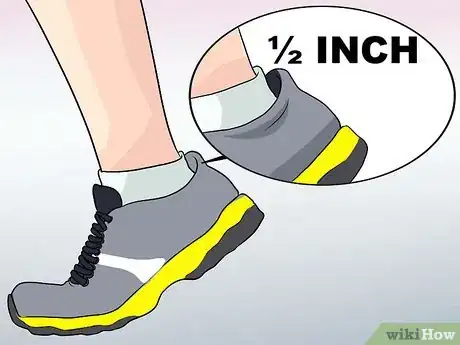
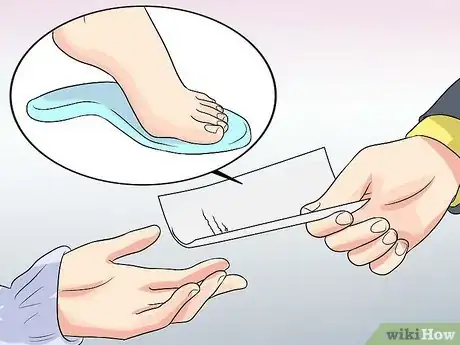
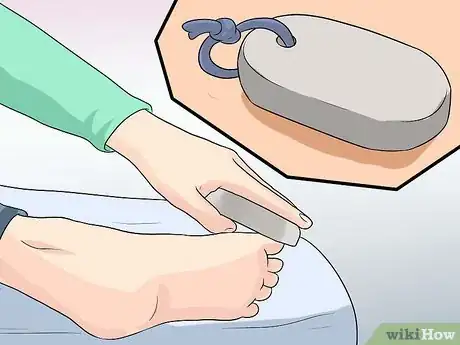



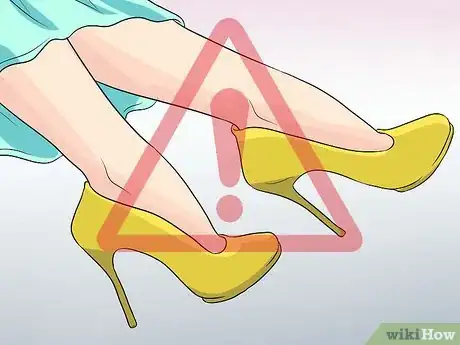

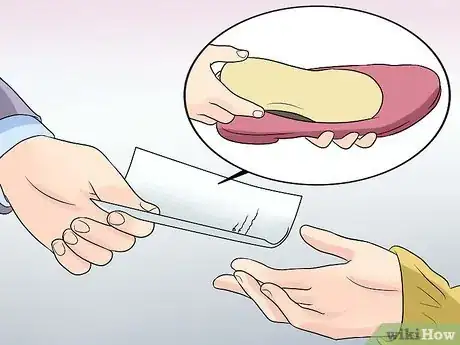
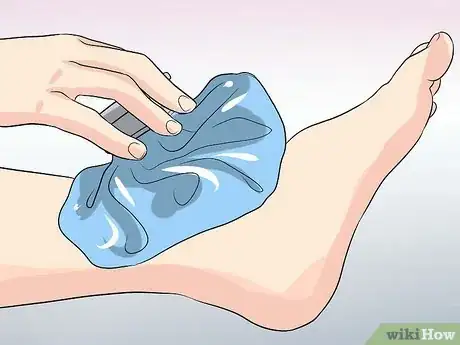
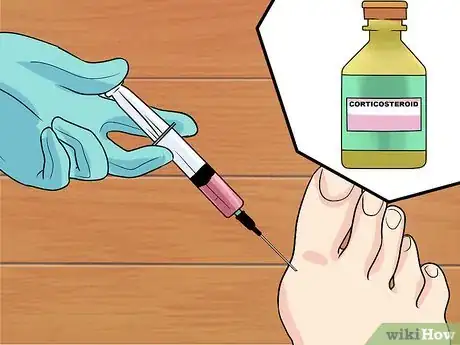
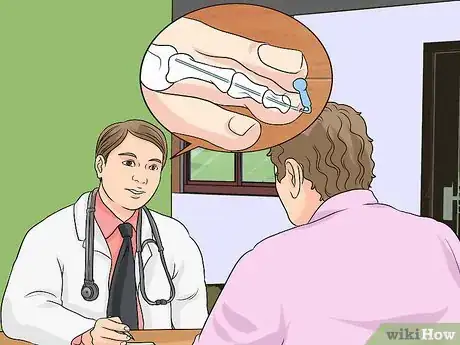

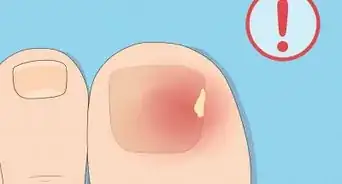



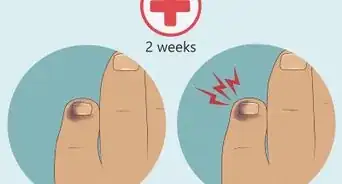
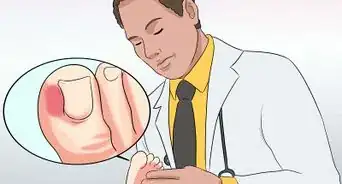
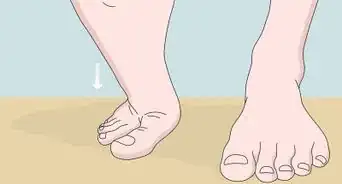
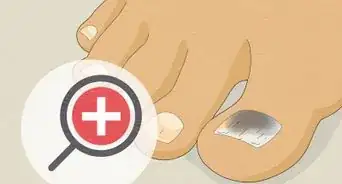












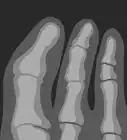






































Medical Disclaimer
The content of this article is not intended to be a substitute for professional medical advice, examination, diagnosis, or treatment. You should always contact your doctor or other qualified healthcare professional before starting, changing, or stopping any kind of health treatment.
Read More...